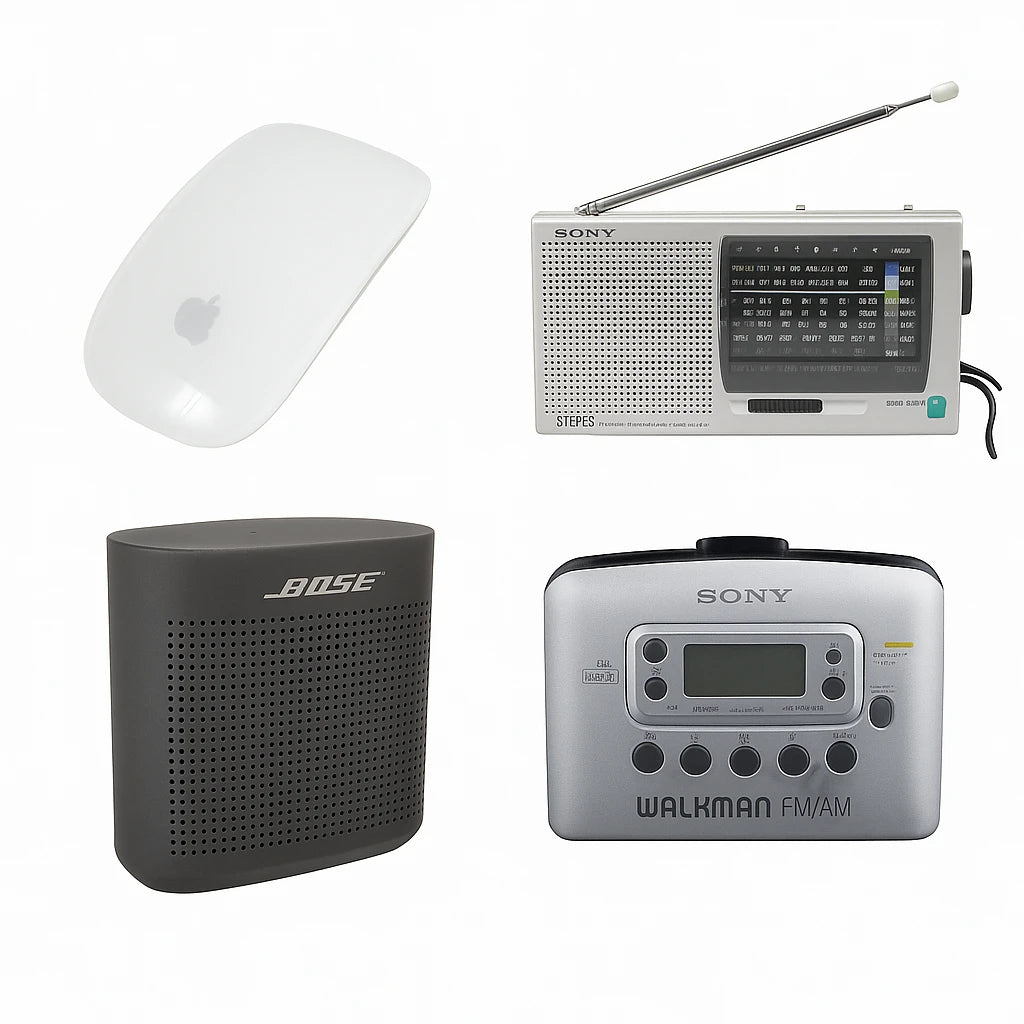
Réamhrá chuig an Petri 7
Cad a gheobhaidh tú: Forbhreathnú ar áit an Petri 7 i stair na scannán agus a thábhacht inniu.
Seasann ceamara an Petri 7 mar shampla clasaiceach de
Bhí an chéad uair a choinnigh mé ceamara meicniúil go hiomlán cosúil le céim siar i stair—go tobann, bhí mé go hiomlán i mo chónaí gan aon bhatareí le feiceáil.
Grianghraf de Stair Ceamara Petri
Cad a gheobhaidh tú: Stair ghearr de Chomhlacht Ceamara Petri agus conas a tháinig an Petri 7 chun cinn sna 1960í.
Thosaigh Comhlacht Ceamara Petri mar Kuribayashi Shashin Kōki sular athainmníodh é tar éis an Dara Cogadh Domhanda. Seoladh an Petri 7 sna 1960í luatha, a bhí cáiliúil as a mhéadar seleniam “súil-chiorcal” glas a bhí ag tarraingt aird, ag déanamh léamha solais infheicthe ó tosaigh.
Samhlóidh tú mar ghrianghrafadóir óg sna 1960idí: ag siúl isteach i siopa agus ag fágáil le Petri 7, bródúil as a bheith ag baint úsáide as meaisín sleek a d'oscail doras do ghrianghrafadóireacht dhíograiseach.

Príomhghnéithe an Petri 7
Cad a gheobhaidh tú: Briseadh síos ar na gnéithe teicniúla agus fisiciúla a sheasann amach don Petri 7.
Lionsa agus Optics
De ghnáth, tháinig an Petri 7 le lionsa Orikkor socraithe 45mm i leaganacha f/2.8 nó f/1.8 — beirt géar go leor le haghaidh úsáid laethúil agus solúbtha do shaothar cruthaitheach.
Rangefinder Conradh
Tá meicníocht díriú
Tógáil agus Méadar
Bhí a mhéadar cealla selenium go hiomlán meicniúil, ag teastáil gan aon bhataireacht. Chuir sé le chéile le shutter iontaofa, agus thairg sé féinleas agus buanacht.
In ardán sráide plódaithe, shocraigh mé an Petri 7 ar chúig méadar agus ghabh mé scéal iomlán ag dul thart orm le cliceáil amháin — gan aon mhoill, gan aon mhoill autofocus.

Cén fáth go bhfuil tábhacht ag baint leis an Petri 7 fós i 2025
Cad a gheobhaidh tú: Cúiseanna cén fáth go bhfuil an ceamara scannán 35mm seandálaí seo fós á ghrá inniu.
Tá an Petri 7 ag lonrú mar phointe iontrála inacmhainne do oideachas analógach agus do chur in iúl cruthaitheach. It balances hands-on practice with a slower, reflective approach that often contrasts with digital urgency.
Seachas an t-snapping gutháin ghréasáin, cuireann shooting a roll sa Petri 7 mo luas síos — tá gach fráma luachmhar agus intinneach.
Ag Úsáid an Petri 7 le haghaidh Grianghrafadóireacht Cruthaitheach
Cad a gheobhaidh tú: Smaointe praiticiúla chun an rud is fearr a bhaint as do Petri 7 mar uirlis chruthaitheach.
Fócas Ceantair le haghaidh Obair Sráide
Trí dháta fócas a shocrú roimh ré, is féidir leat freagairt go tapa do shaol dinimiciúil na cathrach.
Ag Bainistiú nochtadh
Má tá an méadar selenia lochtach, coimeádtar nochtadh comhoiriúnach leis an riail Sunny 16 nó le méadar láimhe.
Experiments Scannáin
Freagraíonn an Petri 7 go maith le stocanna dubh &agus bán clasaiceach, scannáin dhath tomhaltóirí, nó fiú rollaí a bhfuil a n-am críochnaithe caite le haghaidh ton agus uigeacht neamhchinnte.
Tháinig laige amháin de mo chraobh sráide is fearr liom ó shocrú réamhshocraithe — aoibhinn sealadach reoite go deo ar scannán gránach.

Treoir Ceannach Dara Láimh don Petri 7
Cad a gheobhaidh tú: Céimeanna tábhachtacha chun Petri 7 a cheannach ar an dara láimh le muinín.
- Seiceáil
rangefinder soiléire agus comhoiriúnacht an phata. - Déanaigh tástáil ar luasanna scaoilte le cluas le haghaidh comhoiriúnachta.
- Scrúdaigh na blaidí aperture le haghaidh ola nó greamaitheacht.
- Scrúdaigh an lionsa le haghaidh ceo, fungas, nó scratanna.
- Tástáil an meicníocht dul chun cinn &agus athraigh.
Cheannaigh mé uair amháinrangefinder seondúchas neamhshonrach a tháinig chun bheith ina chomhoibrithe taistil dom le blianta — gem i bhfolach fíor.

Chun ár gceamaraí 35mm seondúchas a fhiosrú, seiceáil ár liostaí is déanaí.
Conclúid: Charm na Petri 7 atá ag mairfidh
Cad a gheobhaidh tú: Peirspictíocht deiridh ar luach timeless an
Fanann an Petri 7 inrochtana, meicniúil, agus go deas neamhfoirfe. Cuireann sé le feasacht, cruthaitheacht, agus ceardaíocht ar bhealach nach féidir le haon uirlisí a comhoibriú inniu.
Samhlaím ag tabhairt mo Petri 7 oibre ar aghaidh do ghlúin nua — bronntanas foighne agus fiosracht ghréasáin.
Chun tuilleadh spreagtha a fháil, is féidir leat tuilleadh a fhoghlaim faoi ghabháil le
Ceisteanna Coitianta
An bhfuil an Petri 7 ina cheamara maith do thosaitheoirí? Sea — tá sé inacmhainne, go hiomlán láimhe, agus múineann sé do lucht ghabhála scannán faoi dhíriú agus nochtadh gan leictreonaic.
An bhfuil an méadar solais ar an Petri 7 fós ag obair? Go minic bíonn an méadar selenam marbh nó mícheart; úsáideann an chuid is mó de na grianghrafadóirí Sunny 16 nó méadar solais seachtrach.
Cad é an scannán is fearr a oibríonn leis an Petri 7? Aon stoc scannáin 35mm — mar shampla, Kodak Gold le haghaidh úsáid laethúil nó dubh & bán clasaiceach le haghaidh grianghrafadóireacht sráide.
Conas a mhairfidh mé le haghaidh Petri 7 inniu? De ghnáth idir €40–100 ag brath ar an gcás, le costais bhreise más gá seirbhís.
Cinntí tapa
- Roghnaigh an Petri 7 más mian leat grianghrafadóireacht vintage láimhe.
- Seachain más fearr leat nochtadh uathoibríoch agus áisiúlacht.
- Tá súil agat foghlaim na modhanna tomhais láimhe.
- Tá aonadanna dara láimhe inacmhainne agus éasca le fáil.
Sochair
- Go hiomlán meicniúil, ní gá batraitheanna.
- Inacmhainne i gcomparáid le
rangefinder eile ón tSeapáin. - Stíl uathúil le méadar “súil-chiorclach”.
- Cuireann sé le grianghrafadóireacht chruthaitheach agus foighneach.
Lochtanna
- Ní oibríonn an chuid is mó de na méadraithe solais a thuilleadh.
- Cuireann lionsa socraithe teorainn le ilúsáid.
- Féadfaidh sé a bheith ag teastáil seirbhíse chun úsáid cheart a bhaint as.
Faigh do Petri 7 agus tús a chur le scannán a ghabháil inniu
Más ag iarraidh radharcanna sráide timeless a ghabháil nó ag déanamh turgnaimh le scannán dath, is é an Petri 7 do chara vintage. Tosaigh do thuras analógach agus ceannaigh trealamh ceamara scannán a roghnaíodh linn ag DutchThrift.com.










0 tuairimí